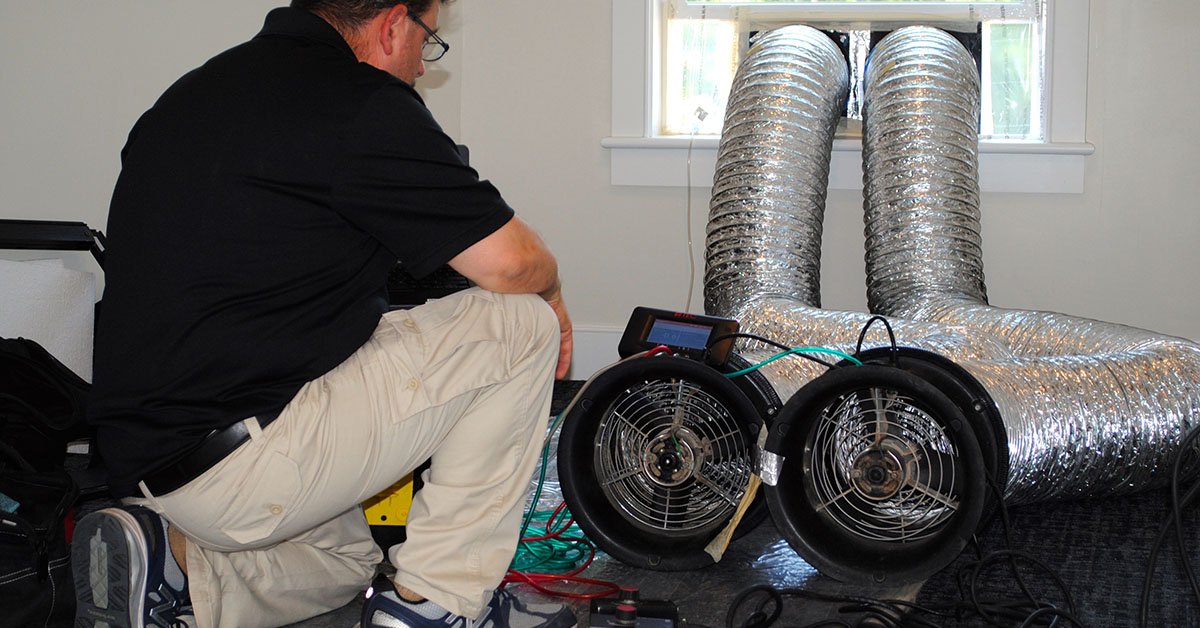
Building Performance Testing
Performance testing is integral to the HERS Rating process. This suite of tests allows us to quantify the performance characteristics of your home.
Blower Door Test
A blower door test evaluates how “leaky” the house is and the test looks just like it sounds. A frame and cloth panel are compression fit in an exterior door and a large calibrated fan is mounted in the frame. The fan depressurizes the interior of the house to a target pressure of 50 pascals and a computer measures how many cubic feet per minute (CFM) of air have to be removed from the house to hold that pressure. The results can be expressed as CFM of leakage or more commonly as air changes per hour (ACH), how many times in one hour is the entire volume of the house exchanged. Typically, energy codes require a maximum ACH allowed in residential construction; here is Massachusetts that maximum is 3.
Check out our article “Air Sealing With AeroBarrier™” to learn about a new and innovative air sealing technology that allows you to reach any level of air tightness, worry free. Never worry about failing a blower door test again!
Duct Test
A duct test will determine the much how leakage there is in the ductwork that delivers heated or cooled air to the living space. The mechanical system is turned off and all the registers, both supplies and returns, are sealed off with a low-tack adhesive plastic. A small calibrated fan is attached to the air handler and the duct system is either pressurized or depressurize to a target pressure of 25 pascals while a computer measures how many cubic feet per minute (CFM) of air have to be added or removed from the ducts to hold that pressure. The results can be expressed as CFM of leakage or more commonly as CFM per square foot (SF) of floor area. Leaky ductwork is a large contributing factor to excessive utility costs.
Ventilation Test
Building codes require a specified amount of ventilation for homes which is calculated by the formulas in ASHREA 62.1 and 62.2. We will compute the amount of required ventilation for your home and test your ventilation system to ensure that it will meet the building code. Ventilation systems can take many forms and are typically comprised of exhaust only or balanced ventilation systems. Exhaust only systems are tested by using a flow hood to measure the cubic feet per minute (CFM) of air being extracted by the fan. Balanced systems can be tested with a flow hood, or more commonly with pressure probes in the incoming and outgoing air streams which measure static pressure. The manufactures of the system have a chart which shows a CFM rate for a given static pressure. Balanced ventilation systems should have an equal amount of incoming and outgoing air.

